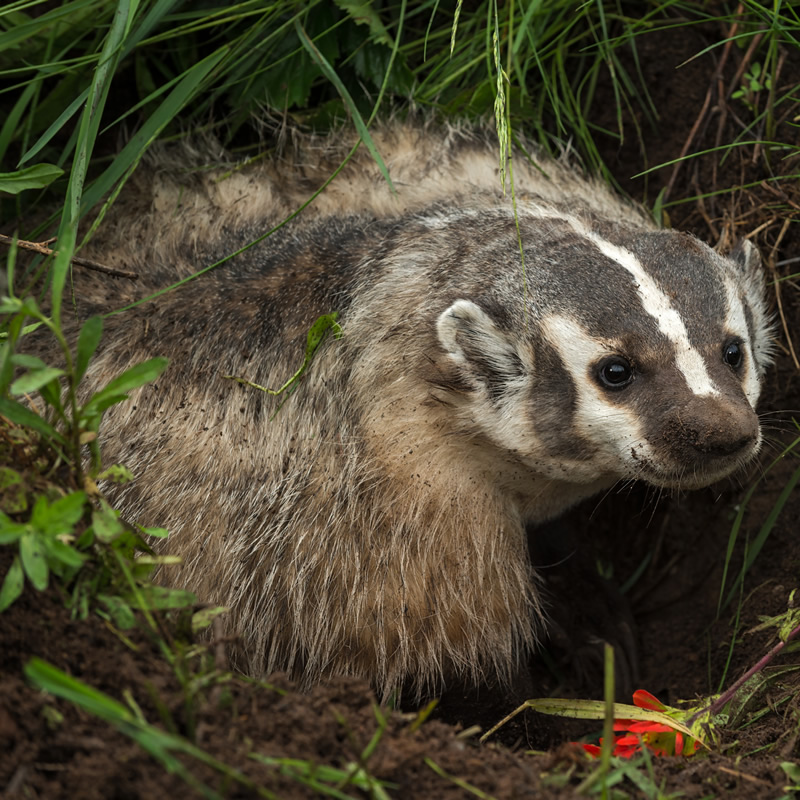
Scientific Name
Taxidea taxus
Classification
| Kingdom | Animalia |
| Phylum | Chordata |
| Class | Mammalia |
| Order | Carnivora |
| Family | Mustelidae |
| Genus | Taxidea |
| Species | taxus |
IUCN Redlist Status

Location
American badgers live in the Northern and Western United States, but can be found as far north as southern Canada and as far south as Baja Mexico. It is important to note that there are several other types of badgers, including European and Honey Badgers.
Habitat
These badgers primarily live in the wide-open plains, farmlands and prairies of the American Midwest and West. They can also be found in less dense forests and deserts throughout their range.
They spend much of their time digging complex underground burrows in which they live. Although it is commonly believed that they hibernate in the winter, this is not exactly true. They do sleep more in the winter than in the warmer months, but they do not actually hibernate.
Diet
American Badgers are opportunistic carnivores and excellent hunters. They tend to seek out animals that burrow and live underground, such as mice, gophers and snakes. In fact, very few animals that live underground are safe from badgers' predatory skills.
They have been known to block the exits of their prey's burrow before going in after them. They also have been observed "teaming up" with coyotes to form a kind of hunting partnership, though only one of them will end up with the meal. If the prey burrows underground, the badger digs after it; if the prey tries to emerge from its burrow to get to the surface, it is pursued by the coyote.
They will also feed on eggs and insects. Though they are scientifically noted as being carnivores, they will on some occasions eat seeds and other plants.
Size
Adult American badgers weigh an average of about 7 pounds. They have wide, short bodies, short and stocky legs, long, thick fur, and distinct markings on their faces.
Description
Their coats are grayish-yellow on their upper body, and creamy white on their underbellies.
Behaviors and Adaptations
The most notable adaptation of badgers is their long, strong, sharp front claws that are used for digging and self-defense. Its front legs are very strong and can move very quickly. They can dig at astounding speeds, and bury dead animals several times their size to feed on later.
They also have loose skin which makes it easier for them to squeeze into burrows and maneuver underground. This also makes it harder for predators to grasp and hold on to them.
Badgers are not only fast diggers, but they can run fast as well. They will fiercely defend themselves and their young, often fending off animals larger than themselves.
These animals may be difficult to spot, even if you live within their range. They are nocturnal, meaning they come out at night. They can also spend many weeks at a time within their burrows.
Reproduction
The reproductive cycle of American badgers is unique. Badgers mate in the summer and fall. Fertilization takes place at that time, but embryos remain in a dormant state for several weeks. Embryos finally implant in the winter, usually sometime between December and February. After a 6 week gestation period, the female gives birth to 1-5 cubs. They typically stay in the burrow for 5 to 6 weeks and strike out on their own toward the end of summer.
Natural Predators
Badgers have few natural predators. Their greatest threats are from habitat and food supply loss.
Other Facts
Badgers are rarely trapped by humans because their fur is not very valuable. They are more beneficial to people alive because they help control the rodent population.
